‘Under this ritual act of decrowning a king lies the very core of the carnival sense of the world–the pathos of shifts and changes, of death and renewal.’
― Mikhail Bakhtin, Problems of Dostoevsky’s Poetics
Carnivals and carnivalesque
What do Pride Marches and Carnivals have in common? Grand displays of costumes, performances and paegentry. However, carnivals usually have a folk connotation, while Pride Marches assert sexual identities. Central to both contexts, is people and their beliefs and how they choose to celebrate it.
However, carnivals usually have a folk connotation, while Pride Marches assert sexual identities. Central to both contexts, is people and their beliefs and how they choose to celebrate it.
As of 16th October, 2024, I have travelled to at least 8 places, this year. Two of which were Milan, the city in Italy, and Kolkata, my hometown. I was in Milan, between the 29th and the 30th of June when the Milan Pride Parade was happening and I was in Kolkata for a couple of weeks in October, during the Durga Pujo, while thousands of people were demanding justice for Tilottama, in Kolkata.
Citizens were reclaiming the night, junior doctors were on hunger-strikes to death and a sea of people turned up for the ‘Droher Carnival’ aka ‘The Carnival of Protest’ on the 15th of October, 2024.
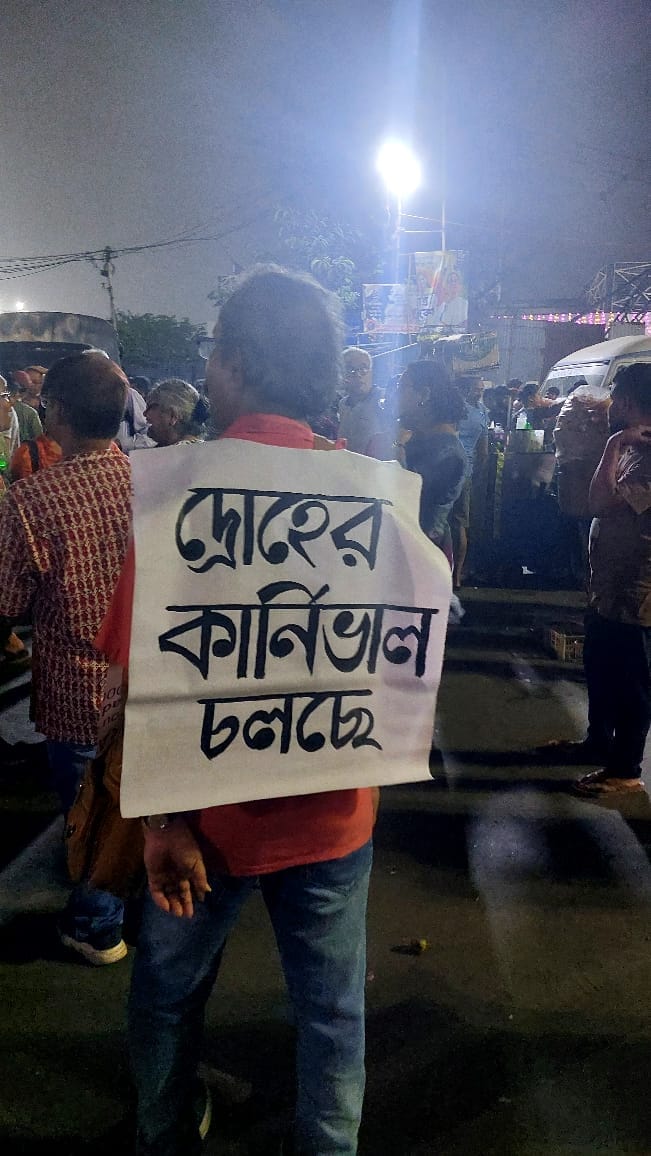
Mikhail Bakhtin refers to the carnival as a social institution that enables the culture of de-stabilisation, and the reversal of power (often temporary) through festivities. The carnival is often a festival of self-expression, and liberation, which speaks truth to power through collective celebratory jest.
The carnival is often a festival of self-expression, and liberation, which speaks truth to power through collective celebratory jest.
The Carnivalesque is any form of literary or cultural expression that embodies and expresses this subversion of the narratives of dominance. It is through lens we shall attempt to contextualise my observations at the Milan Rainbow Pride March, 2024 and The Carnival of Protest, Kolkata, October, 2024.
Notes from the nomad diaries
While admiring the grand architecture of Milan Centrale, I suddenly heard a rumble from afar. So, I decided to explore the source. As I approached the source, the rumble grew into a medley of chants and I found myself looking at a large main street in the middle of the city centre, littered with confetti, which were being cleared. The road was littered with beer bottles, confetti, rainbow flags, and Pride paraphernalia. I realised that I was at the tail of the Milan pride march.
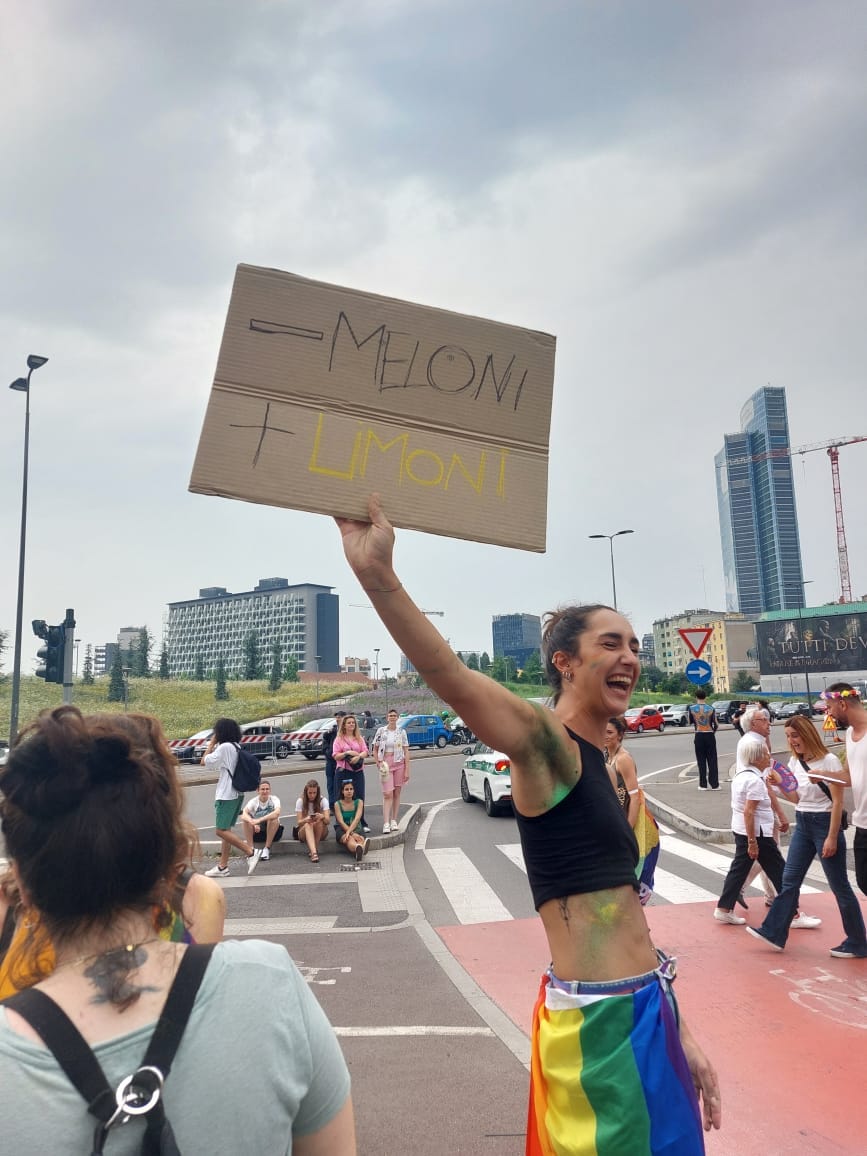
What followed, were LGBTQIA+ themed buses and large crowds of Italian citizens, all out on the streets, loud, proud and owning up to their personal and political narratives. From, Scat-kinksters calling out for the downfall of fascism to Doll-fetishists screaming against the ongoing genocide in Palestine, to entire buses filled with LGBTQIA+ individuals and allies screaming ‘Amore, Amore‘, I saw it all.
It was my first Pride, after all. It is important to keep in mind that Italy is generally considered to be one of the most homophobic nations in the EU. It was my privilege to witness the carnival of people’s sexual expressions and outspoken politics, out in all its glory.
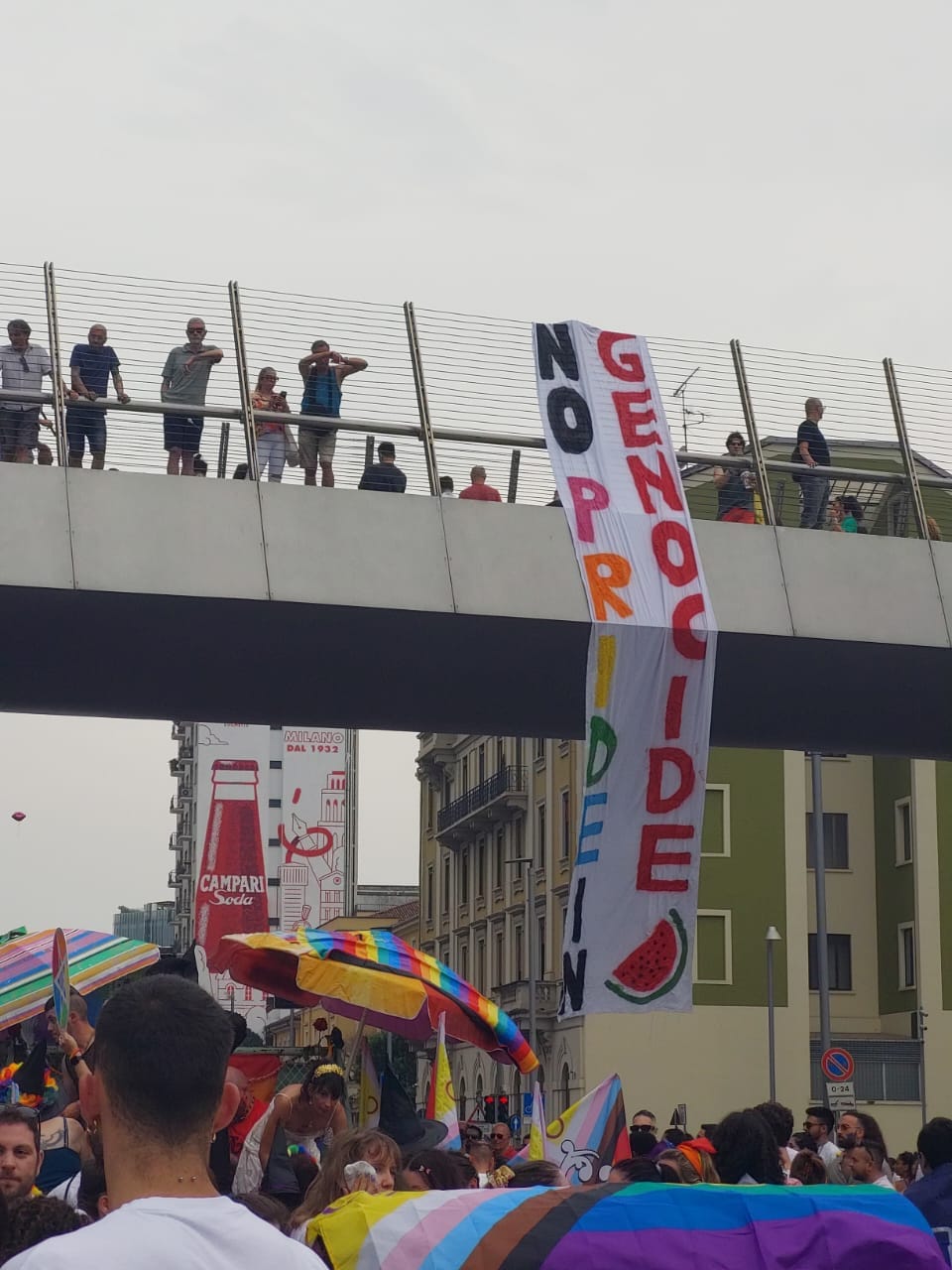
Cut to, Kolkata. When I entered Kolkata in the beginning of October, I walked into a city, tired from constant protesting. Everyone, I mean, everyone I spoke to, was tired by the ruling government’s criminal tactics. It has been over two months since the case of a grotesque rape and murder of a junior doctor has come to light and despite public outcry, not much has changed in the status quo for justice.
It has been over two months since the case of a grotesque rape and murder of a junior doctor has come to light and despite public outcry, not much has changed in the status quo for justice.
In the mean-time, allegations about threat culture in public hospital spaces like R.G.Kar medical College and Hospital, have also come to light. CM Mamata Banerjee’s outright lack of empathy, decency and sensitivity has not gone un-noticed. One would expect female leadership to lend an ear to the masses, but protesting citizens have been subjected to terrible excesses of police violence. Calls for the boycott of Durga Pujo, this year, went out earlier last month. But given the importance of this festival to Bengalis, it was always going to be challenging.
Social media was abuzz, highlighting the hypocrisy of praying to a goddess that destroys all evil, while punishing citizens for peacefully marching for justice. So, after the initial arrests during the early days of the Durga Puja this year, the morale of the people seemed down, but who knew that there was such a seething sense of disgust and anger, brewing underneath. The Esplanade – Y channel, where the doctors are sitting for their hunger strike, was teeming with citizens in solidarity with the doctors on Oshtomi/Nabami. For cultural context, it is during the night of Oshtomi to Nabami, when the Goddess Durga destroys Mahishasur and good reigns over evil.
While Durga Puja itself dates back to nearly 1610, the ‘Carnival’ associated with the Bishorjon is a fairly recent addition. It started out as a harmless extension of Durgapujo festivities after the recognition of Durga Pujo by UNESCO as Intangible Cultural Heritage in 2021, but this year, the Doctors called for a ‘Droher Carnival’ aka the Carnival of Protest, alongside the Carnival that celebrates the Durga Pratima Visarjan.
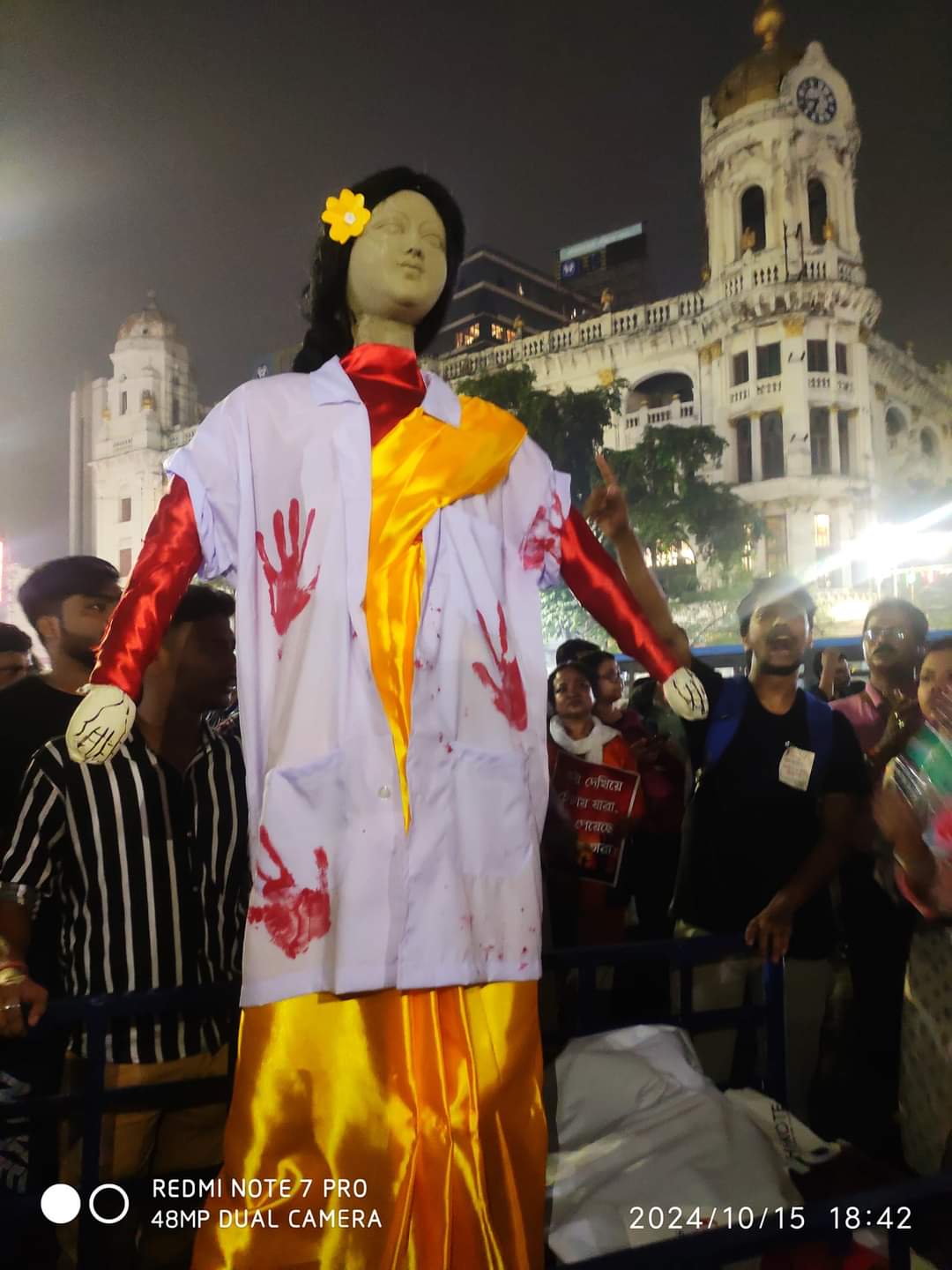
In his thesis on Carnivals and Carnivalesque Mikhail Bakhtin has noted, that the medieval European Carnivals were spaces where power was temporarily subverted, and the ability to speak truth to power through humour and festivities were created. After the high court passed the ruling that BNSS 163, could not be imposed on the adjoining areas around the ‘Bishorjon Carnival’ AKA the official state sponsored carnival, videos of the metro station closest to Esplanade Y channel, started going viral, with people chanting, ‘We want Justice‘, ‘Justice for R.G.Kar‘, in the metro station while punching their smartcards on their way out.
By the time, I decided to set out for the ‘Droher Carnival’ or the ‘Carnival of Protest’ my social media home pages, had already blown up with posts about the sea of people that have spontaneously turned up in solidarity with the Doctors call for Carnival. While the doctors on hunger strike, sat in their tents, their strength was further encouraged by the sea of people that had turned up to stand with them. The carnival itself was full of protest installations, people creating spontaneous art, rallies and sloganeering citizens, all standing for the same cause, Justice.
(Image courtesy: Utsarjana Mutsuddi)
Synthesising the carnivalesque experiences
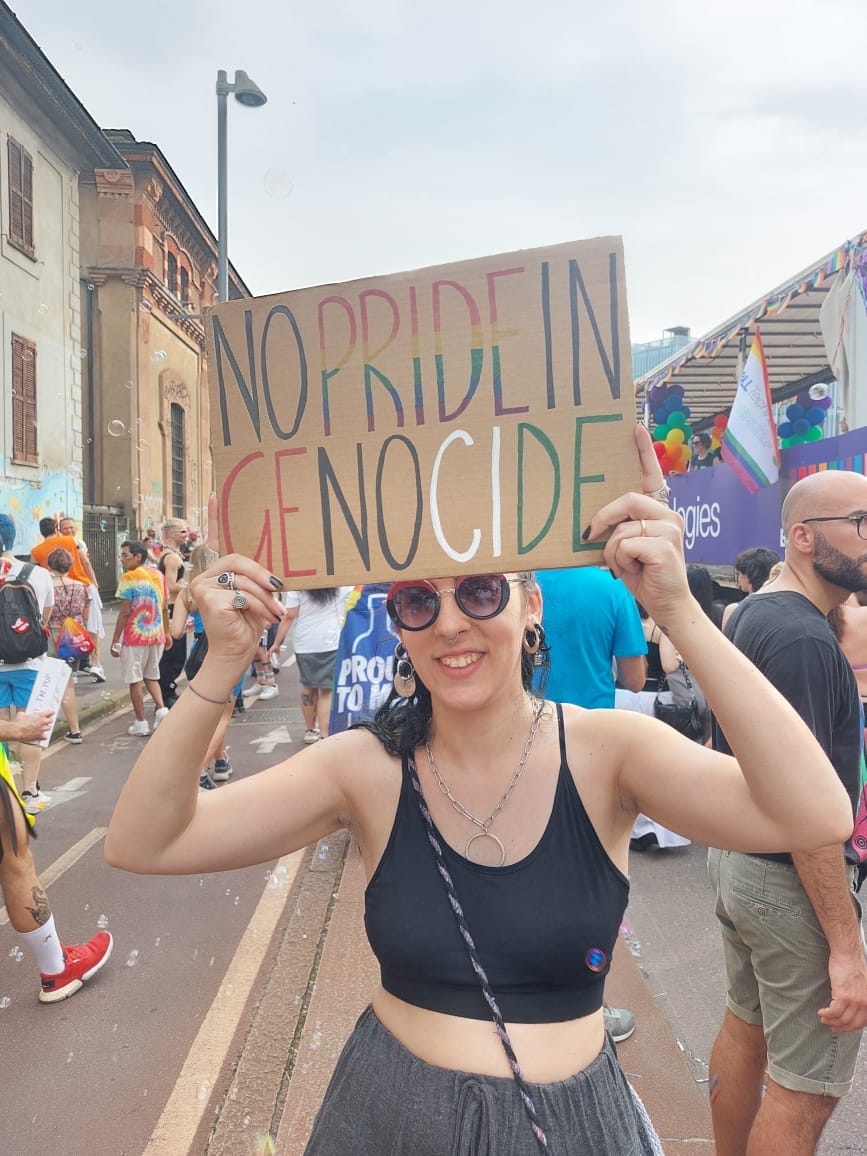
In the Milan Pride, Italian citizens were proudly announcing their stance against the Genocide in Palestine. They were celebrating their individuality, their sexuality and their politics. This at a time, when the ruling right wing government was consistently hell-bent to denying marriage equality and family creating opportunities to non-normative couples. That solidarity and collective strength is infectious, was apparent from the massive turnout at the rally. I counted over 20 Carnival buses with various themes ranging from Kink to Barbiecore. As feminists and allies we can never afford to forget that the first Pride was a Riot.
I counted over 20 Carnival buses with various themes ranging from Kink to Barbiecore. As feminists and allies we can never afford to forget that the first Pride was a Riot
Though the Droher Carnival was not exactly a riot, earlier that day a doctor serving at the Bishorjon Carnival, who was wearing a ‘Justice for R.G.Kar‘ badge, was arrested for his defiance. Moreover, in the last two months there have been numerous arrests, detentions, and unwarranted police enabled violence during the Movement demanding justice for Tilottama/Abhaya. That the Carnival of protest was such a success despite the best efforts of the state machinery to divert, delegitimise and discredit it, speaks volumes about the true power of the carnival in the Bakhtinian sense.
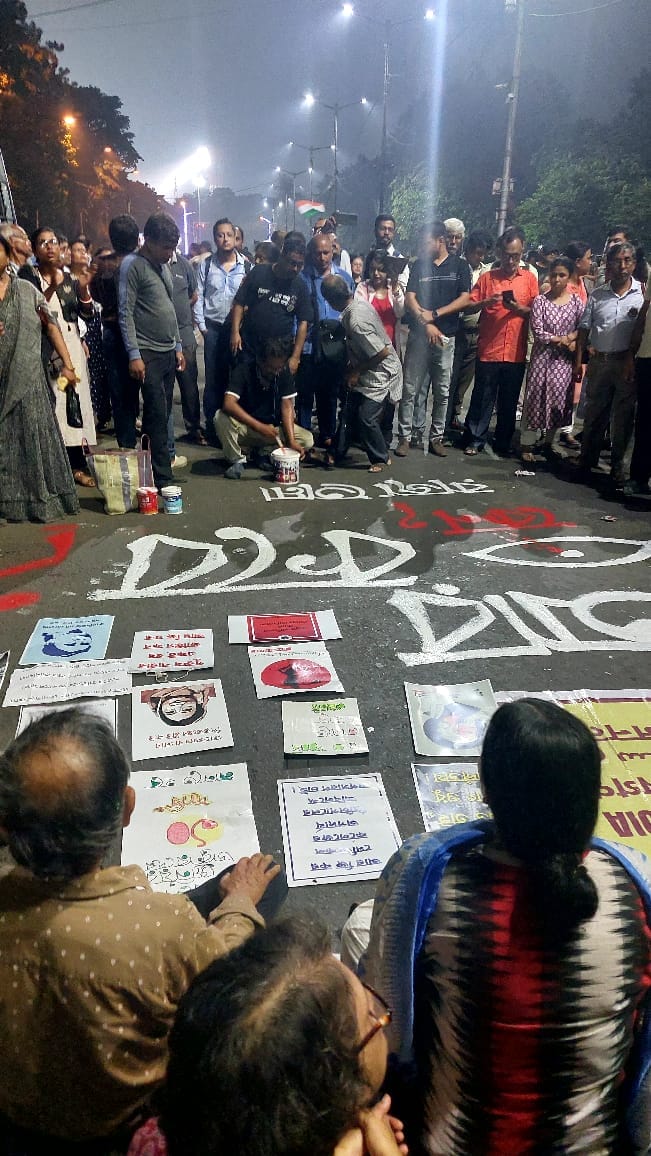
A capitalist, modern day, entertainment focussed idea of carnival might end up highlighting the paegentry, but carnivals are rooted in the grotesque, the expression of people’s liberty and freedom of opinion.
Nomad reflections
During my travels this year, I have realised that be it Milan or be it Kolkata, when people take to the streets, they let the powers that be, know of their place in the democracy. Voting is how people change or maintain the status quo of their governance. Carnival and carnivalesque Pride marches, are when they allow governments to take a peek into their hearts. A vote is a number. A carnival allows for a richer expression of personal and political views. And at the end of the day, all festivals have an universal good over evil origin story and they always advocate for integrity over corruption.
To put it in purely contemporary terms, state forces everywhere, be it in Germany, USA, Italy or India, when deployed against citizens demanding that basic human rights be validated and upheld, are always on the side of evil. Whether it’s a Pride March in Milan or a Carnival of Protest in solidarity with Junior Doctors on a hunger strike to death in Kolkata, carnivals are repositories of counter-cultural memories that the state (read powers that were/are/be) would choose to forget, so people find their own ways to commemorate and commit their own histories to memory.
Albeit, spontaneously, like I saw in Kolkata. To conclude the middle-classes, working classes, oppressed classes, gender- sexuality minorities, indigenous and racial minorities and disabled peoples everywhere in the world have more in common with each other, irrespective of nationality, than people in the same country do that are in solidarity with the classes, and people that are actively oppressing them.
About the author(s)
Utsarjana Mutsuddi, is a PhD Research Scholar working in the broader area of Cultural Studies with a focus on Performance, Cultural Texts and Indigenous Studies. She loves to write, create, cook and dream.




